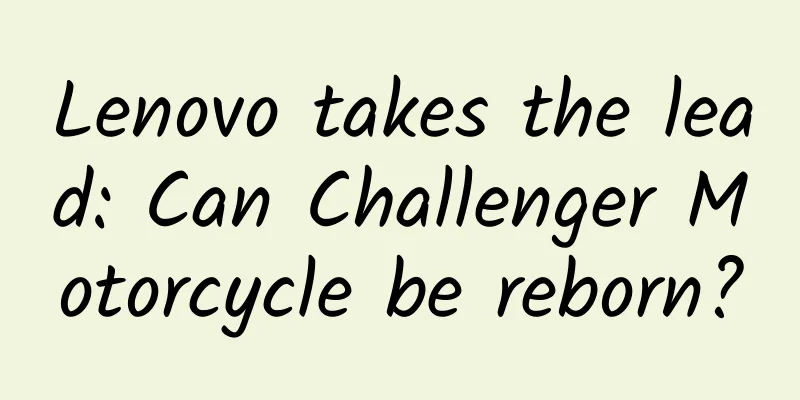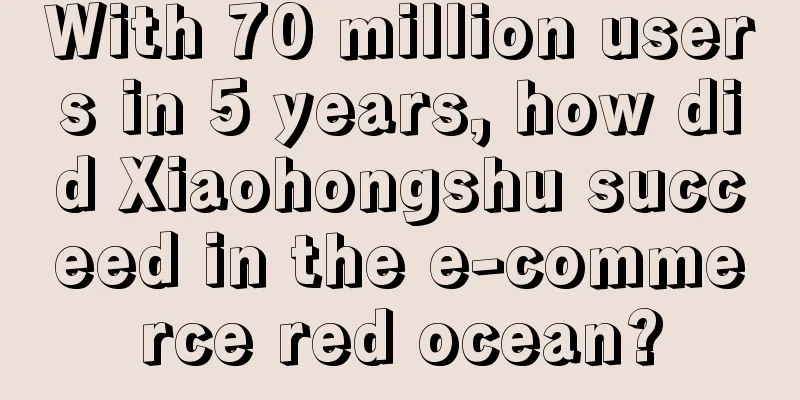Lenovo takes the lead: Can Challenger Motorcycle be reborn?

|
Dong Jun At 3 pm on February 26, 2015, thousands of Motorola (hereinafter referred to as "Moto") fans gathered at the Beijing National Convention Center. Motorola released three mobile phones - Moto X, Moto X pro, and the new Moto G, announcing its strong return to China. Motorola returned, Lenovo took the lead - success or failure depends on the actual effect of Lenovo's dual-brand strategy. In January 2014, Lenovo announced the acquisition of Motorola and completed all the acquisition procedures at the end of October of the same year. In January 2015, Lenovo was eager to bring Motorola back to China. On the one hand, it was eager to reshape the Motorola brand and race against time in the market; on the other hand, it was also eager to improve Lenovo's layout on the mobile phone side. Differentiation - the power of user choice Past glory does not guarantee future success. As the former global leader in the mobile phone industry, Motorola's halo has long faded and has changed hands twice. After being acquired by Google, it was almost hidden away. Motorola has not shown any signs of recovery and later withdrew from the Chinese market. 2014 was a year of great reversal for domestic brands in the Chinese mobile phone market. The overall market grew rapidly, and the share of domestic mobile phones increased. At the same time, competition became increasingly fierce. Today's mobile phone market is completely different from when Motorola dominated the market. Many concepts and operating models are constantly being updated. If you can't "play" new tricks, it will be difficult to succeed again just by relying on the afterglow of the past. Acquired by Lenovo a year ago, Lenovo is now eager to bring Motorola back to the Chinese market. Is it ready? Liu Jun, executive vice president of Lenovo Group and president of the Mobile Business Group, first said that Motorola's management team began to transform towards consumers two years ago, including product development and promotion, adherence to the original Android experience, rapid upgrades, and later personalized customization services such as Moto Maker, which formed Motorola's differentiated advantages. Interestingly, the old Moto has also played the "fan economy". At the press conference that day, fans played a big role. Liu Jun also mentioned in his speech: "Some Moto fans know more about products and technologies than I and my colleagues." Obviously, Moto's return, "fan economy" is one of the keywords. It is reported that Moto defines the target group as young and fashionable people under 35 years old with a certain purchasing power, emphasizing youth and fashion. The most active user group of smartphones in China is obviously a perfect match, and the positioning is still relatively accurate. The second keyword is native Android, because Motorola has an advantage in getting the latest version of Android due to its special relationship with Google. Although Chinese users are not very receptive to the original Android ecosystem, sticking to the original Android ecosystem can clearly distinguish Motorola from other mobile phones, forming a distinct market feature, making it easier for users to identify and cultivate its own user base and fan base. The third is customization. Motorola, which is positioned for young people, hopes to highlight the individuality of young people, so it emphasizes the customization of mobile phones. In addition, Motorola revealed that it will soon support users to choose shell material, color, memory, laser engraving, startup language, background image and other customized services online. By then, every user can get a unique mobile phone. From this point of view, Motorola is also giving users more power to choose. "A few years ago, the Moto team sat down and had a heart-to-heart talk, and we said, 'Don't think about us, because we are not important, the user is important,'" said Jim Wicks, head of Moto's consumer experience design. "Then everything changed. We looked at everything from top to bottom, inside and out, to see what changes needed to be made to give users what they want." Dual brands: success or failure depends on association Motorola's fortunes have fluctuated over the past few years, and it has missed the peak of China's smartphone development. In 2015, the new smartphone market is no longer strong, and on the other hand, the important channel of operators is also severely compressed. Can Motorola, "led" by Lenovo, "rise from the ashes" as Yang Yuanqing hopes? Rick Osterloh, president and chief operating officer of Motorola Mobility Technologies, said in an interview with a reporter from China Business News that Motorola is returning to the market as a "challenger" and is giving it a try. According to Liu Jun, Lenovo will implement a "dual brand" strategy, with Motorola focusing on mid-to-high-end products and Lenovo targeting entry-level consumer products. Liu Jun believes that in the Chinese market, Lenovo mobile phones and Motorola are not in competition but in a complementary relationship. Lenovo has previously made market breakthroughs in high-end products, and the return of Motorola is also an opportunity for Lenovo's mobile phone brand to rise. Lenovo Group Vice President and MBG Mobile Business General Manager Zhang Hui said that he is not worried about the competition between the two brands. "If there are some product overlaps in the future, the MOTO Management Committee will coordinate within the company. The two-fisted attack in the Chinese region will definitely bring better market results." In 2014, domestic telecom operators significantly reduced subsidies, resulting in the overall market share of operators dropping from 60% to about 30%. This has brought a great impact on Lenovo, which relies on operator channels. Lenovo is currently making every effort to enter the online market and the open market. Liu Jun said that Lenovo's biggest advantage lies in the operator market. Although the operator market performed poorly in 2014, it is still an important resource. At the same time, Lenovo is also making every effort to enter the online market and the open market. It has achieved success and is steadily improving. This time, Motorola will be launched on the e-commerce platform for the first time and fully cooperate with the six major e-commerce platforms. Although Lenovo will not give up offline channels, its intention to transform to online is already obvious. I believe that trying through Motorola may be a good opportunity to help Lenovo transform to the channel. Of course, Lenovo's offline channel capabilities are the most complete, which will undoubtedly be a basic guarantee for Motorola's offline sales. The greatest value of Lenovo's acquisition of Motorola and its return to the Chinese market lies in the integration of the two brands' supply chain systems. "We have integrated the supply chain and procurement, so that we can maximize our scale advantage and bargaining power in the supply chain. Secondly, Lenovo has also announced the integration of its sales organization. We hope to provide customers with a unique window in a certain region, and at the same time, we hope to maximize the use of Lenovo's sales teams in China, Asia Pacific, Eastern Europe and other markets to quickly bring Motorola back to the market." Liu Jun said. "We have a lot of internal communication and mutual learning and reference, including mutual experience sharing between R&D teams, joint development projects, etc., all of which are being promoted. I think we are an all-round cooperation." Lenovo will bring Motorola back to China, and the dual-brand strategy will be an important part of its success or failure. More than a decade ago, after Lenovo acquired IBM notebooks, it gradually became the leader in the global PC industry through the dual-brand strategy. The experience and lessons learned at the time will help Motorola's return this time. However, whether Motorola can shine again in the Chinese market still needs to wait for market testing. |
<<: Google re-emphasizes upgrade policy, most Android devices continue to be excluded from updates
Recommend
Starting from setting up stalls, let’s talk about advertising optimization techniques!
There is a lot of knowledge hidden behind the sma...
Activity operation data analysis method!
Data analysis is one of the core capabilities of ...
Fan Jian Taobao Tmall Courses - Business Advisor Data Analysis Courses (Advanced) to help you run your store easily
Fan Jian Taobao Tmall Courses - Business Advisor ...
How do we media people make money? What are the profit models of self-media?
Wow, one day’s income from self-media is equivale...
A close relative of the “man-eating plant” reappeared in Xishuangbanna - the parasitic flower. Will it eat people?
Produced by: Science Popularization China Author:...
Does bacon cause cancer? Five things you need to do to eat bacon healthily
In my country, bacon is a delicacy with a unique ...
Operational Tips: 11 indicators to pay attention to at each stage of mobile financial app operation
China's mobile financial Internet industry ha...
How much hope does UnionPay still have under the pressure from WeChat and Alipay?
[[259905]] There are also certain opportunities i...
Must read! Case study of adding fans in the industry. It is not a problem to attract 10,000 fans a day~
A student who has just switched to information fl...
How to acquire more users at low cost?
When an operator wants to promote a product, he s...
China Automobile Dealers Association: Tracking of some data on China's automobile exports overseas from January to June 2023
Since 2021, with the outbreak of the global COVID...
Beats Solo3 vs. Sony h.ear mini WH-H800: Apple headphones are completely defeated?
For the headphones currently on the market priced...
108 Internet Marketing Tools/Websites
Ever since the Wei Zexi incident broke out last y...
Revealing the secret of Toutiao’s user growth!
Toutiao has always been criticized for its vulgar...
NRDC & Peking University: Research on the potential for coal-fired power transformation and optimization in typical provinces in China
Based on the characteristics of geographical loca...









